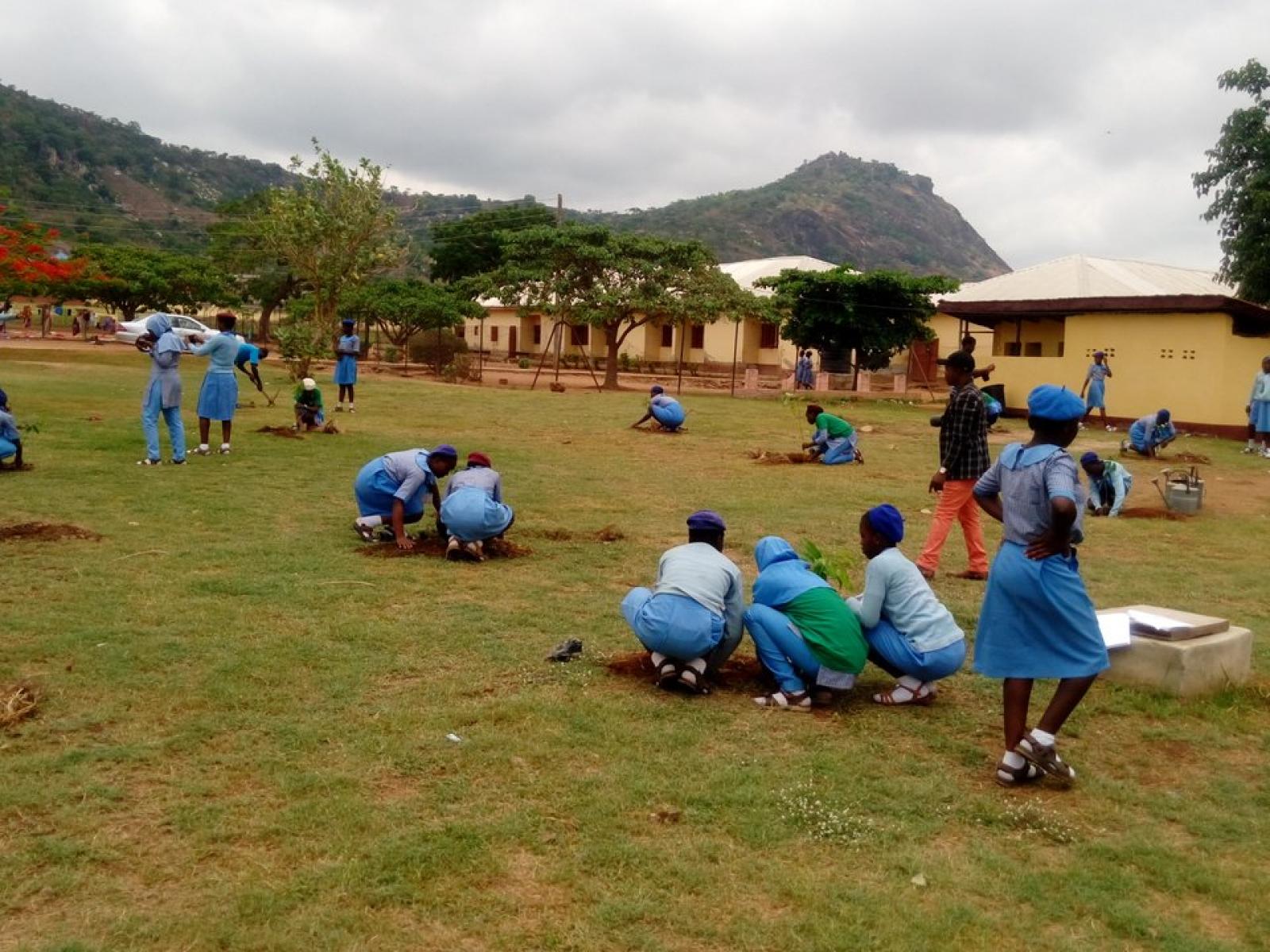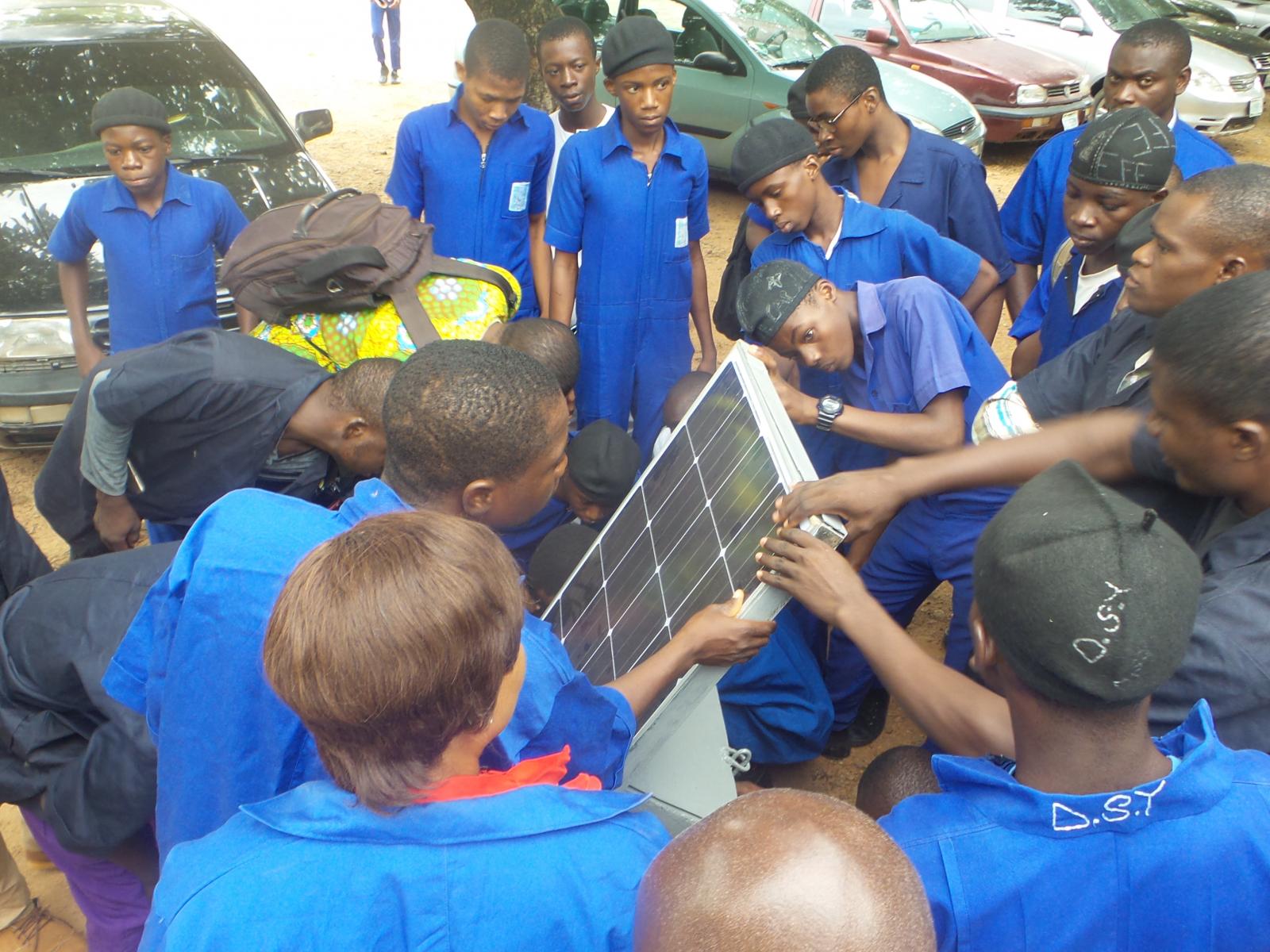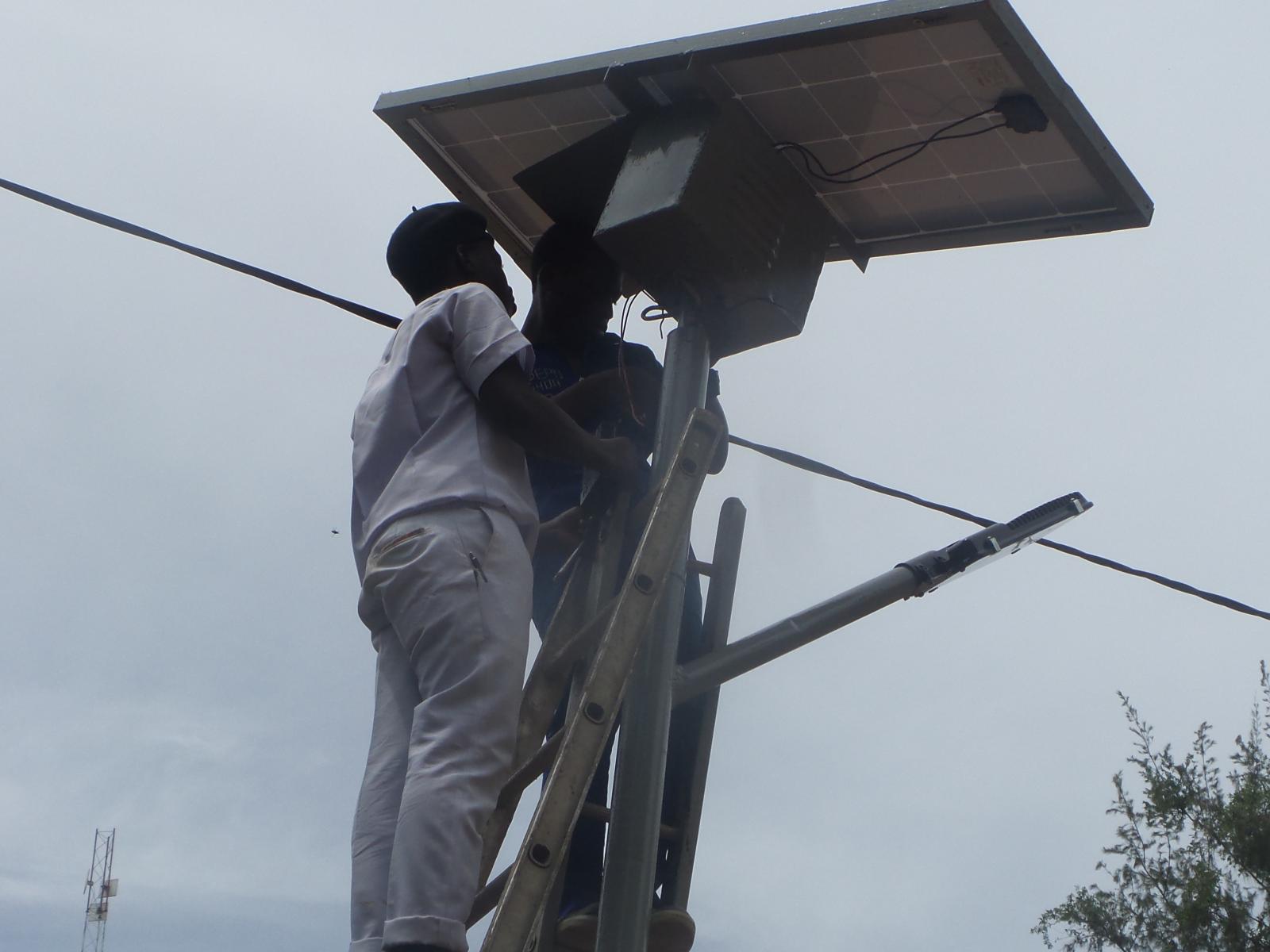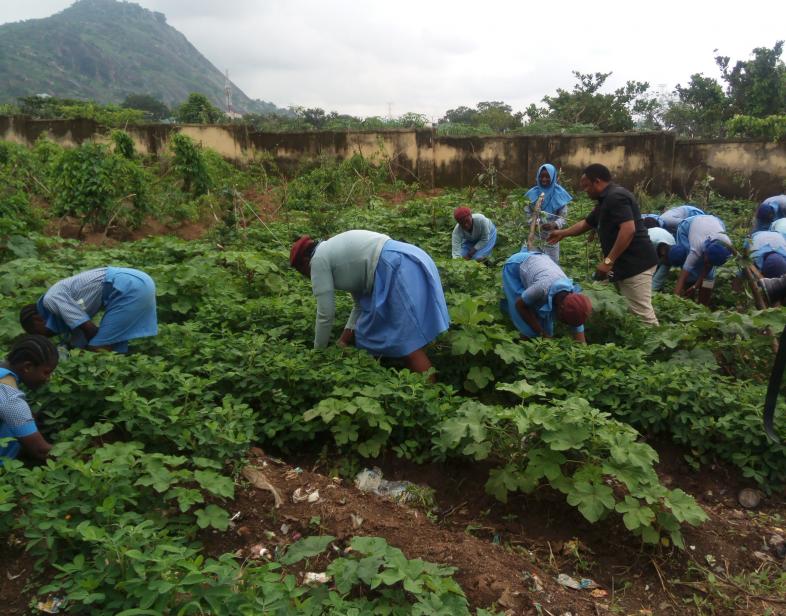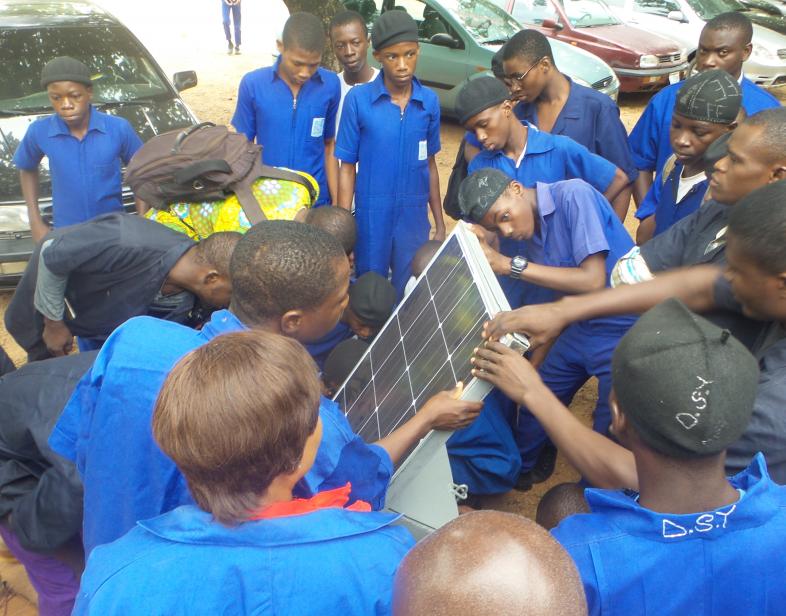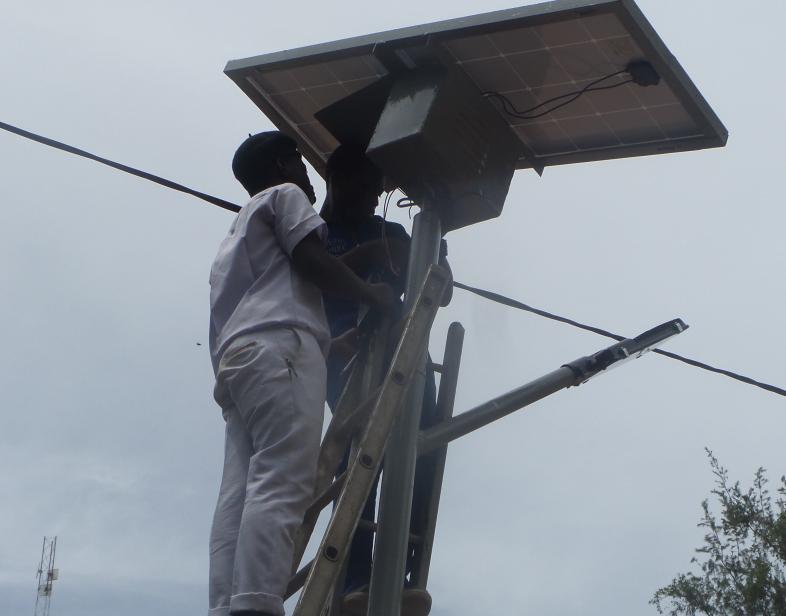An Overview Of Our Solution
This project seeks to encourage and encourage and demonstrate the essence of collective measures to address climate change and environmental stewardship through behavioral change.
The specific goal of this project is to ensure adoption of environmental principle in at least 50 schools increasing students and teachers’ awareness and knowledge on climate change and engaging them in practical activities.
The project output include; formation and empowering of school environmental clubs and setting up of a base for school action in the fight against climate change and act as a vehicle of information between students, teachers and the society.
- Population Impacted: 10,000
- Continent: Africa
Context Analysis
Our organization GIFSEP is a Non-Profit organization we carried out a similar project in Abuja Nigeria with the support of GEF Small Grant Program implemented in Nigeria by the UNDP. The project is titled; Capacity Building of Students to Address Climate Change in Schools in FCT Abuja. We have completed the first phase of the project and we looking out for funds to upscale the project activities. There is a significant collapse in environmental stewardship. Unfortunately, the majority of these discussions have seen college student being left out and not practically involved. Many Nigerian School children are aware of the changes in the environment. In the project location, there is increased disease, food shortages and extreme flooding at certain periods of the year. Yet there have been little or no efforts towards involving and enhancing the capacity of the school children and youths towards climate change mitigation and adaptation measures.
Describe the technical solution you wanted the target audience to adopt
Our technical solution has been well adopted by the target audience i.e. 16 Senior Secondary Schools where we established environmental clubs and carried out practical projects. Some of our solutions include the following:
The introduction of solar energy to schools through training and practical demonstration on installation/maintenance of simple solar systems. There are many boarding schools were the students rely on kerosene lanterns to read at night but with solar they have clean energy.
Tree Planting and establishment of gardening and training on skills in climate smart agriculture
Waste Segregation and production of compost
Climate arts, Environmental music and knowledge sharing and management
These solutions are implemented by the project beneficiaries themselves. Eg, schools without electricity was powered by the beneficiaries themselves after training and capacity building, restoration of landscape through Tree planting and agronomic measures of erosion control.
Type of intervention
Describe your behavioral intervention
Within the project location and its environs it is customary to cut down trees. In fact, according to the gbabyi culture, the indigenous inhabitants of Abuja, stock pile of wood is giving as inheritance or as gift during marriages. Again, indiscriminate dumping of solid waste and bush burning are other bad behaviours this initiative is changing. We ensured consumer adoption of desired behavior through awareness raising, training, provision of alternatives and enactment of community laws.
Through education, projects and action such as this initiative, children can contribute to every aspect of climate change awareness, mitigation and adaptation. When empowered and educated on climate change, children can reduce the vulnerability of themselves and their communities to risk and contribute to environmental stewardship and sustainable development.
Climate specialist have reportedly pointed out that a solution to the climate change problem will require climate change awareness, education and proper understanding of the phenomenon by all actors. In order to fast-tract this awareness and education that will lead to change in behavior, it is necessary to train students and youths as agents of change.
As needed, please explain the type of intervention in more detail
Emotional appeal was the strongest intervention; we used music, poems arts and drama to appeal to the emotions. We produced information, education and communication materials in indigenous languages. We also provided alternative choices for example; we fabricated a locally made stove that uses less wood for cooking as compared to the open fires. Thought the beneficiaries how to produce and use reusable bags and how to convert bio waste to organic fertilizer through composting.
Describe your implementation
The project activities include;
• Capacity building workshops and training
• Hands on activity on design Installation and installation of solar system
• Establishment orchards through Trees for Schools and community campaign
• Production of IEC Materials
• Continuous Monitoring and Evaluation
• Establishment of a school vegetable garden
• Demonstration and preparation of compost, and use it in the school garden, or at home and the construction of compost structures.
• Training on waste segregation and recycling.
• Knowledge sharing and management workshop
The aforementioned activities are the solution to the problems in the context analysis section.
To ensured our solution was adopted we engaged the project beneficiaries from the project design and planning stage, project implementation stage and the monitoring and evaluation to ensure efficiency and effectiveness in delivery.
One of the key success factors is that the project beneficiaries were positioned at the forefront of the implementation of the project and participated actively in the management and maintenance of the project outputs and outcomes. Another key success factor was social inclusion (Mainstreaming gender, youth and indigenous people). The project took note of the fact that climate change affects women and men in different ways and as such has incorporated social inclusion at the various stages of the project implementation.
Again, the project activities are designed to be practical and engaging the students/teachers/community dwellers to channel their energy to practical activities of which the results would be evident. The project has no major risk; however there is a low risk of transfer of teachers/mentors from the school/community. Teachers are trained as mentors in the selected schools/communities. Sometimes they are transferred due to Government policy to mitigate this risk, we train at least three teachers from each school/community.
External connections
The key stakeholders in the project implementation are the students and teachers. The key partners included the following: The key partner was the GEF Small grant Project. Other partners include; The FCT Secondary School Education, African Climate Reality Project, Henry Boll Foundation, Mother Earth Project, Federal Ministry of Environment Nigeria, National Park and Services.
Who adopted the desired behaviors and to what degree?
The desired behavior was adopted by over 2000 trained environmental champions have introduced environmental conservation practices and knowledge about climate change in their homes and communities leading to Green and cleaner environment by reduced bush burning and climate action and at least 5000 in direct beneficiaries.
1. Discussions are on with the Secondary School Education Board to introduce climate change into the school curriculum.
2. Increased students of Government Secondary School Yaba reading time by at least 4 hours per day through the provision of solar lighting in the school and reduced carbon emissions and inhalation from the use of kerosene lanterns by 40%.
3. Increased Tree canopy, atheistic and carbon sequestration.
4. Secured partnerships with a waste recycling company to pick up collected plastics for recycling.
5. Directly trained 110 youths with skills in solar installation and maintenance
https://www.youtube.com/watch?v=5oNR6jFe744
How did you impact natural resource use and greenhouse gas emissions?
The project improved proper waste disposal especially plastic waste by 90% in the project locations. This year witnessed zero bush burning and felling of Trees in the schools where Environmental Clubs were established. Water and energy conservation increased by 40%, increased tree canopy by 10% and also carbon sequestration due to tree planting. Carbon sequestration in the soil also increased due to increased composting in the schools.
The provision of solar lighting in the school reduced carbon emissions and inhalation from the use of kerosene lanterns by 40%. We measured the environmental impact of this project by comparing the state of the school (s) environment before, during and after the project implementation. The number of Trees saved, planted and nurtured by the project beneficiaries. The amount paid on water and light bills after the introduction of energy and water conservation techniques. The quantity of waste generated and compost produced
What were some of the resulting co-benefits?
The project has trained and created job opportunities in Waste recycling, solar design and installation, compost production and organic farming. The project has constructed 10 waste recycling and compost structures in 10 schools and has linked them to up- takers of recycled materials.
The long term benefits of this project to the beneficiaries and the environment cannot be overemphasized. They include the following: The project beneficiaries who are 90% young people students in secondary school will grow up as environmental advocates and will become positive influencers on environmental sustainability. Also, the trees planted and the garden will provide food for the project beneficiaries. Again, many of the students will embrace waste recycling and solar installation as means of employment while many others will pursue degrees in environmental sustainability and climate change. Furthermore, the environment will also benefit as the trees planted will form a canopy and help in carbon sequestration. Waste recycling is also one of the ways the environment will benefit as improper dumping of waste especially plastics will be reduce in the project location.
Sustainability
This project is self-sustainable. After establishing the clubs, the teachers and leaders of the clubs were mentored so as to effectively guide the clubs in achieving her set out objectives. A strategy will be put in place which will allocate certain positions to students in the senior classes. This way, not all the officials will be graduating from the schools at the same time. The clubs activities and entire project have being designed to be practical and engaging the students/teachers/community dwellers to channel their energy to practical activities of which the results would be evident. The school farms and gardens, establish plant nurseries, compost making etc profits from the aforementioned will be used to finance the activities.
Return on investment
It cost 50,000 USD to implement this project, the protect outcomes far outweighs the investment.
How could we successfully replicate this solution elsewhere?
This initiative can be successfully implemented elsewhere, it has not been done before but it is easy to replicate. The key stakeholders are the students and teachers. The funding depends on the number of schools and the number of the project beneficiaries. It is advisable to start with few schools say ten and other schools will adopt the project activities in their schools and community when they see the success stories.
